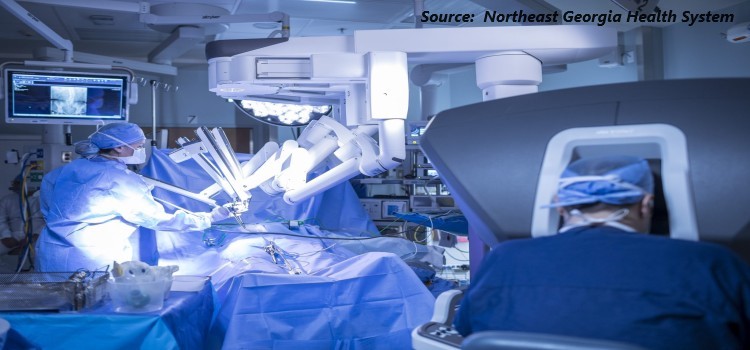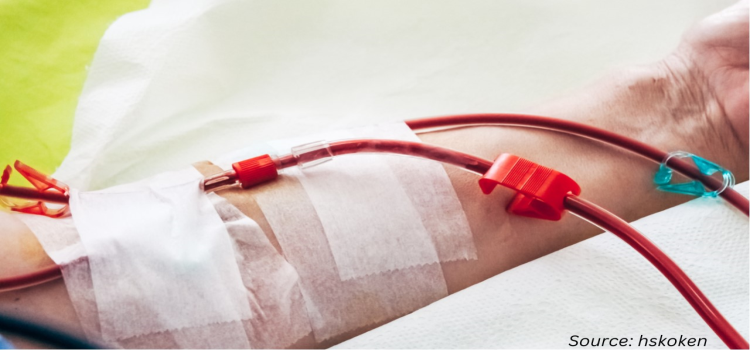
Australia Disabled & Elderly Assistive Device Market by Type (Living Aids, Hearing Aids, Mobility Aids, Medical Furniture, and Bathroom Safety Equipment), and by End User (Hospitals, Elderly Nursing Homes, Home Care, and Other End Users) – Opportunity Analysis and Industry Forecast, 2024–2030
Industry: Healthcare | Publish Date: 11-Dec-2023 | No of Pages: 133 | No. of Tables: 99 | No. of Figures: 64 | Format: PDF | Report Code : N/A
Market Definition
The Australia Disabled & Elderly Assistive Device Market size was valued at USD 634.7 million in 2023, and is predicted to reach USD 973.7 million by 2030, with a CAGR of 6.08% from 2024 to 2030. The assistive device industry empowers individuals with disabilities and older adults to live more independent and fulfilling lives by designing and manufacturing specialized tools and systems. This industry encompasses a wide range of devices and software solutions tailored to address physical, sensory, cognitive, and developmental limitations.
Operating at the convergence of healthcare, technology, and accessibility, it gives rise to innovative solutions such as mobility aids, communication devices, and home automation systems. Fueled by an aging population, rapid technological advancements, and evolving regulatory landscapes, the assistive device industry prioritizes inclusivity and continuously adapts to meet the ever-changing needs of its diverse user base.
Technological Innovations Transforming Australia's Assistive Device Industry
Australia's assistive device industry is flourishing, fueled by the rapid adoption of technological advancements. These innovations are transforming the sector, introducing groundbreaking solutions that empower people with disabilities and the elderly to live fuller, more independent lives. From sophisticated robotics that enhance mobility to personalized wearable devices that monitor health metrics, technology is a driving force behind the development of life-changing assistive devices.
3D printing has revolutionized the realm of prosthetics and orthopedic aids, enabling the creation of customized devices that are tailored to the individual's needs. This level of personalization ensures a better fit and improved functionality, leading to a more comfortable and effective experience for users. As a result, the quality of life for people with disabilities and the elderly is significantly enhanced.
Government Support Drives the Growth of Assistive Device Industry in Australia
The Australian government's strong commitment to supporting the disabled and elderly has been instrumental in fueling the growth of the assistive device industry in the country. The National Disability Insurance Scheme (NDIS), a landmark program that provides financial assistance and services to people with disabilities, stands as a prime example of this support. The NDIS plays a vital role in expanding access to assistive devices, such as mobility aids and communication tools, thereby improving the quality of life and independence for individuals with disabilities.
Furthermore, the Australian government dedicates funding to aged care services, acknowledging the needs of the elderly population. This funding guarantees that older adults receive the necessary assistive devices, allowing them to age with dignity and retain their autonomy.
High Cost and Affordability of Assistive Devices Hinders the Market Growth in Australia
The high cost of assistive technologies often puts them out of reach for many individuals, especially those in developing and underdeveloped countries who have low or fixed incomes. This lack of access creates a significant barrier for a large portion of the population, preventing them from benefiting from these life-changing tools. Moreover, a widespread lack of awareness about the availability and benefits of assistive technologies among individuals, caregivers, and even healthcare professionals contribute to their underutilization.
Integration of Future Technologies such as AI and ML for the Australia Assistive Device Industry
Assistive technology is transforming, becoming more personalized, accessible, and productive than ever before. This is due in large part to advancements in artificial intelligence (AI) and machine learning (ML), which are enabling assistive devices to be tailored to individual needs and adapt to changing conditions. The Internet of Things (IoT) and smart home systems are also empowering users to control their environments more independently than before.
Wearable devices and sensors monitor health metrics in real-time, providing valuable insights for self-care and overall well-being. Robotics-powered mobility aids and exoskeletons are augmenting physical capabilities, while augmented reality (AR) and virtual reality (VR) technologies are revolutionizing training and rehabilitation programs. These groundbreaking innovations are reshaping the assistive technology industry, expanding the range and efficacy of solutions while making them more accessible to those who need them.
Competitive Landscape
Various market players operating in the Australia disabled & elderly assistive device market include Invacare Corporation, Sunrise Medical LLC, Bausch & Lomb, Inc., Permobil AB, Siemens Healthcare, Freedom Scientific, Inc., William Demant Holding A/S, Starkey Hearing Technologies, GN ReSound Group, Ai Squared, Blue Chip Medical Products, Inc., MED-EL, Liberator Ltd., Drive Medical Design and Manufacturing, Exact Dynamics B.V., and others.
Australia Disabled & Elderly Assistive Device Key Market Segments
By Type
-
Living Aids
-
Hearing Aids
-
Behind-the-ear Aids (BTE)
-
Receiver-in-the-Ear Aids (RITE)
-
In-the-Ear Aids (ITE)
-
Bone Anchored Hearing Aids (BAHA)
-
Canal Hearing Aids
-
Cochlear Implants
-
Reading and Vision Aids
-
Braille Translators
-
Video Magnifiers
-
Reading Machines
-
Others
-
-
Mobility Aids
-
Walkers & Rollators
-
Canes & Walking Sticks
-
Crutches
-
Transfer Lifts or Patient Mechanical Lift Handling
-
Door Openers
-
Others
-
-
Medical Furniture
-
Medical Beds
-
Door Openers
-
Medical Furniture Accessories
-
Riser Reclining Chairs
-
Others
-
-
Bathroom Safety Equipment
-
Shower Chairs
-
Commodes
-
Ostomy Products
-
Bars, Grips, & Rails
-
By End User
-
Hospitals
-
Elderly Nursing Homes
-
Home Care
-
Other End Users
REPORT SCOPE AND SEGMENTATION:
|
Parameters |
Details |
|
Market Size in 2023 |
USD 634.71 Million |
|
Revenue Forecast in 2030 |
USD 973.70 Million |
|
Growth Rate |
CAGR of 6.08% from 2024 to 2030 |
|
Analysis Period |
2023–2030 |
|
Base Year Considered |
2023 |
|
Forecast Period |
2024–2030 |
|
Market Size Estimation |
Million (USD) |
|
Growth Factors |
Technological innovations transforming the assistive device industry Government support driving the growth of the assistive device industry |
|
Companies Profiled |
15 |
|
Market Share |
Available for 10 companies |
|
Customization Scope |
Free customization (equivalent up to 80 working hours of analysts) after purchase. Addition or alteration to country, regional, and segment scope. |
|
Pricing and Purchase Options |
Avail customized purchase options to meet your exact research needs. |
KEY PLAYERS
-
Invacare Corporation
-
Sunrise Medical LLC
-
Bausch & Lomb, Inc.
-
Permobil AB
-
Siemens Healthcare
-
Freedom Scientific, Inc.
-
William Demant Holding A/S
-
Starkey Hearing Technologies
-
GN ReSound Group
-
Ai Squared
-
Blue Chip Medical Products, Inc.
-
MED-EL
-
Liberator Ltd.
-
Drive Medical Design and Manufacturing
-
Exact Dynamics B.V.




 Speak to Our Analyst
Speak to Our Analyst


































